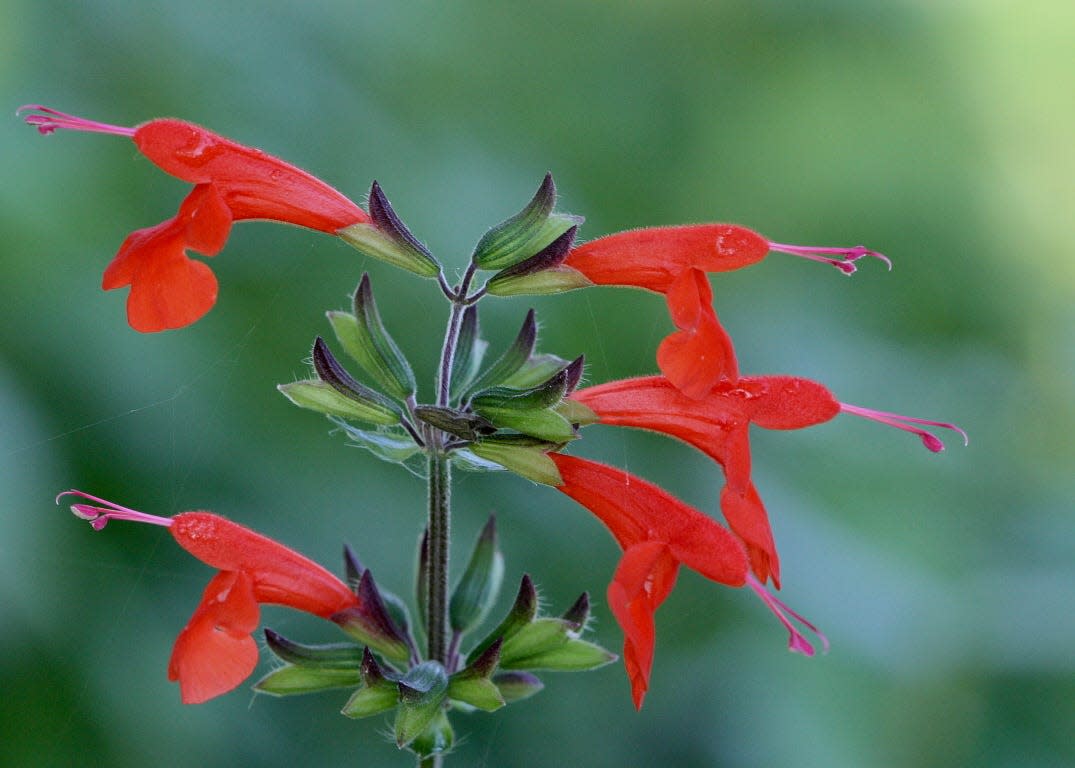CHARLES REYNOLDS: Native Salvia fends for itself

Among the most popular, colorful and easy-care natives is tropical sage, a short-lived, reseeding perennial that attracts butterflies and hummingbirds. Suitable for sun or moderate shade, tropical sage (Salvia coccinea) is typically 1½ to 3 feet tall, though it can grow considerably taller when leaning on nearby shrubs. The species’ bright-red blossoms have been augmented by varieties with pink, white and two-toned flowers. This upright Salvia, appropriate for formal landscapes, butterfly gardens and container cultivation, also features aromatic foliage. Tropical sage, which blooms nearly year-round, is propagated by cuttings and seeds.
BIRD OF PARADISE RESPONDS TO GOOD CARE
From South Africa comes a remarkable clumping perennial that’s often mistreated. Bird of paradise (Strelitzia reginae) grows 3 to 7 feet tall and tolerates poor, sandy soil and lengthy drought — but doesn’t like it. Instead of using the species’ ability to withstand neglect as justification to disregard basic care, gardeners should enrich planting sites and irrigate during dry spells. Only then will this evergreen gem produce an abundance of long-stalked, dark-green leaves and those incredible bird-like blossoms that inspired its common name.
The flowers, which look other-worldly, are impressively large, combining bright-orange petals with a silvery-blue, boat-shaped bract. The result looks like a gaudy tropical bird in flight. Interestingly, bird of paradise doesn’t have a distinct flowering season: its magnificent blossoms can appear any time of year in sun or light shade. Propagate this pest-free plant by division during the warm season.
SPEAK OF THE DEVIL
If it weren’t for its extreme versatility, devil’s backbone might be considered a mere curiosity — a conversation piece. But this Tropical American clumping species (Pedilanthus tithymaloides), especially in its variegated form, is popular not just for its amazing zigzag stems but because it thrives in poor soil in sun or shade. Adding to its appeal, devil’s backbone is nearly drought and pest-proof. A succulent plant, this 2-to-3-foot evergreen perennial can be used for foundation plantings, shrubbery border components and container subjects. In winter, stems are adorned with small, red-bracted blossoms. Propagate with warm-season cuttings. Note: devil’s backbone has milky sap that can cause skin, mouth and eye irritations.
DON'T BLAME GOLDENROD
Goldenrod plants, common throughout the Eastern U.S., are represented in Florida by 19 native species, with several of them used in landscaping. Regarding their reputation for triggering allergies, physicians say goldenrod pollen plays little or no role. The best of these native perennials for Central Florida landscapes is sweet goldenrod (Solidago odoro var. Chapmanii), a 2-foot-tall plant that features aromatic foliage and beautiful yellow blossoms in autumn. Also notable is seaside goldenrod (S. sempervirens), which should be cultivated only on sunny, sandy sites low in organic matter. Seaside goldenrod grows up to 4 feet tall, forms clumps and begins flowering in summer. Both species are propagated by seeds and cuttings. Available from native nurseries.
This article originally appeared on The Ledger: WEEKEND PLANTINGS

